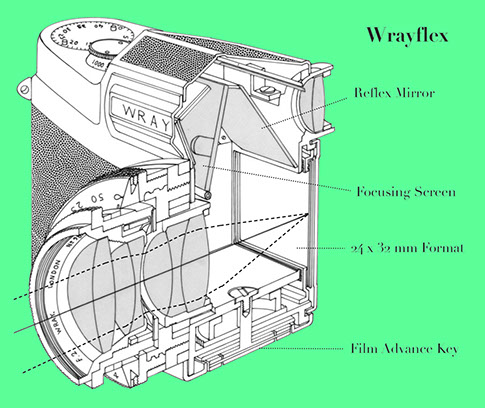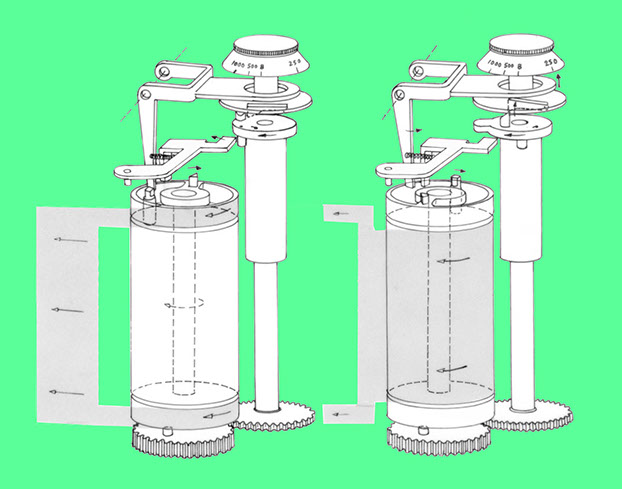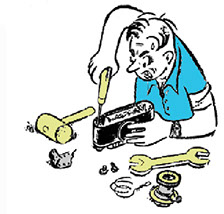


Above, Wrayflex disassembled to show its retard mechanism, shutter, and viewfinder mechanism. Below cross section of Wrayflex before, and after the exposure. Wrayflex has an extraordinary design but it seems they began with a great idea but left it unfinished. The image through the viewfinder looks terrible. It's as if its focusing screen was built with hot glue by a five year old.
I have no idea what I would have done if I was in designer's shoes. They might have thought well the prototype looks good except the viewfinder but no problem, we'll fix it later, and they never did. There is a tall glass cylinder glued on the focusing screen to magnify the center of image for focusing. I wish that was a swing out piece but since everything moves inside this camera where would one put it? It a dilemma of utilizing mirrors instead of a pentaprism because it causes the focusing screen to look small through the eyepiece, but it's the mirror/focusing screen/viewfinder combination that makes this design work. You can't change anything in it except the focusing aid which without it, focusing would be quite difficult.



Left, the shutter sequence in Wrayflex features a non-spinning shutter speed dial, which was quite new at that time.
After the first curtain is released (left) the 2nd curtain drum is held in place by a lever that is disengaged after the speed dial (driven by the first curtain drum) pushes it up (right) to release the 2nd curtain. In all focal plane shutters, the first curtain drum or roller causes the 2nd curtain to be released. The rotational angle is set by the shutter speed dial. In SLR cameras, this sequence kick starts after the mirror reaches its up position.

Drawings by Ali Afshari from the book: "Restoring the SLR".
Requires Timing Alignment